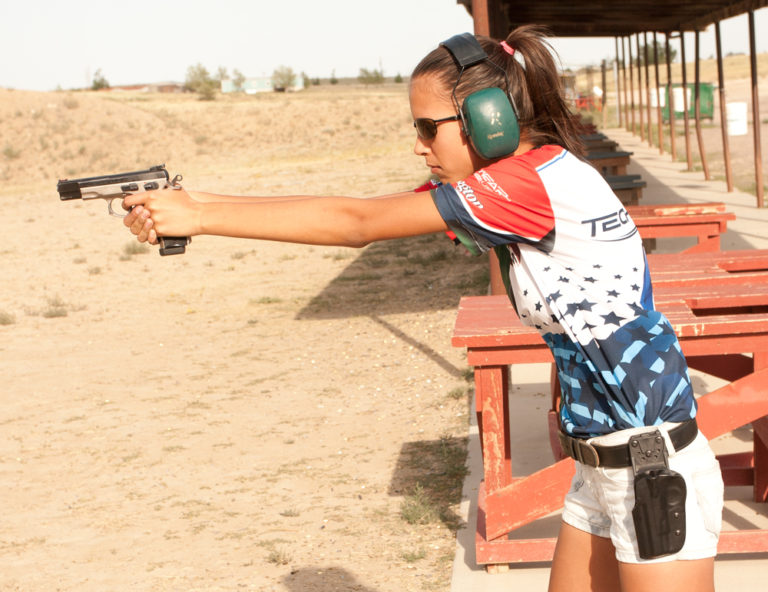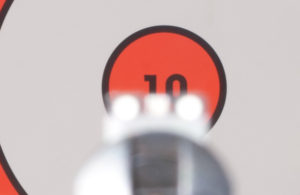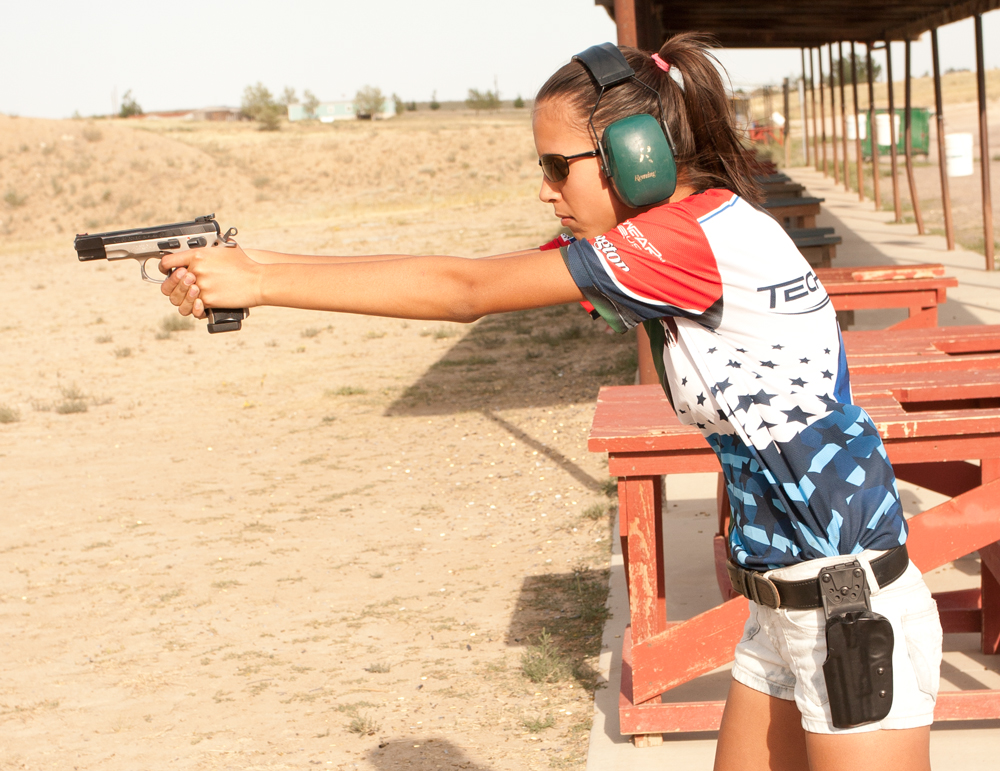
Improve your handgun shooting speed and accuracy by focusing on the front sight and mastering the flash sight picture. Peter Lessler explains how.

The two most important components of sight use are to focus the eyes on the front sight and then verify the alignment between front and rear sights. The eyes can only focus in one distance plane at one point, and the front sight, rear sight, and target will all be at different distances from the eyes. The reason we pick the front sight as our focus object is that this little stub of metal tells us where the gun is aiming.
When we focus on the target, the front and rear sights will both be blurry. In this case, a small misalignment of the gun (which would be visible as sight misalignment) will not be noticed, and the gun will be looking along a different line of sight than our eyes are looking.

It does not take much of an angular misalignment in the gun barrel versus our eyesight line for the shot to miss the target completely, and since this misalignment represents two diverging lines, the amount of error will grow rapidly with increasing distance to the target.
So, again, we focus on our front sight. This puts the target out of focus, just as it does the rear sights, but, in this case, it’s not a drawback, since just about anything we will be shooting at with an iron-sighted pistol will be easy to see in general.
Any error caused by aiming at a slightly blurry target will only be as big as the blurry edge of the target, which is actually a very small amount of space; truly, it is negligible, especially compared to the potential of the misalignment error allowed by not looking at your sights. So, we focus on the front sight and let the target blur slightly.
How to Increase Speed
Speaking of speed, one goal to work towards is to first achieve with the hands a near-perfect sight alignment with the target as quickly as possible, then visually acquire and judge the correctness of your sight picture as rapidly as can be done. At this point the mind says “good to go” to a good sight picture and commences the trigger squeeze, or says “not yet” to a bad sight picture and corrects it to good one before commencing the trigger squeeze.

This combines two notions. The first is the “flash sight picture,” in which we recognize our sight picture and judge it in a bare instant. The second notion is that the sight picture is the boss, not the trigger finger. In other words, our sight picture is the go/no-go determinant of whether we fire the shot.
No trigger pressure should be applied until our eyes have acquired the sight picture and our brain has approved it. This concept should be burned into the circuitry of your brain: The brain controls the trigger finger based on what the eyes see. This is the basic principle of accurate pistol shooting.
This is an excerpt from Gun Digest Shooter's Guide to Handgun Marksmanship.

Next Step: Get your FREE Printable Target Pack
Enhance your shooting precision with our 62 MOA Targets, perfect for rifles and handguns. Crafted in collaboration with Storm Tactical for accuracy and versatility.
Subscribe to the Gun Digest email newsletter and get your downloadable target pack sent straight to your inbox. Stay updated with the latest firearms info in the industry.


![Best Concealed Carry Guns In 2025 [Field Tested] Wilson Combat EDC X9S 1](https://gundigest.com/wp-content/uploads/Wilson-Combat-EDC-X9S-1-324x160.jpg)


![Best 9mm Carbine: Affordable PCCs [Tested] Ruger Carbine Shooting](https://gundigest.com/wp-content/uploads/Ruger-Carbine-Shooting-100x70.jpg)
![Best AR-15: Top Options Available Today [Field Tested] Harrington and Richardson PSA XM177E2 feature](https://gundigest.com/wp-content/uploads/Harrington-and-Richardson-PSA-XM177E2-feature-100x70.jpg)

Very good article. Useful, helpful and correct. From my military experience and trng experience, tactically, we rely on point and shoot technique, a practiced technique which establishes muscle memory so Everytime the weapon is presented, it is already very close to being on target, so we only need to place the front sight on target, than engage. This makes target acquisition quicker and more effective. As described in the article, aligning the front and rear sight with the target takes time. Again, great article, thanks.